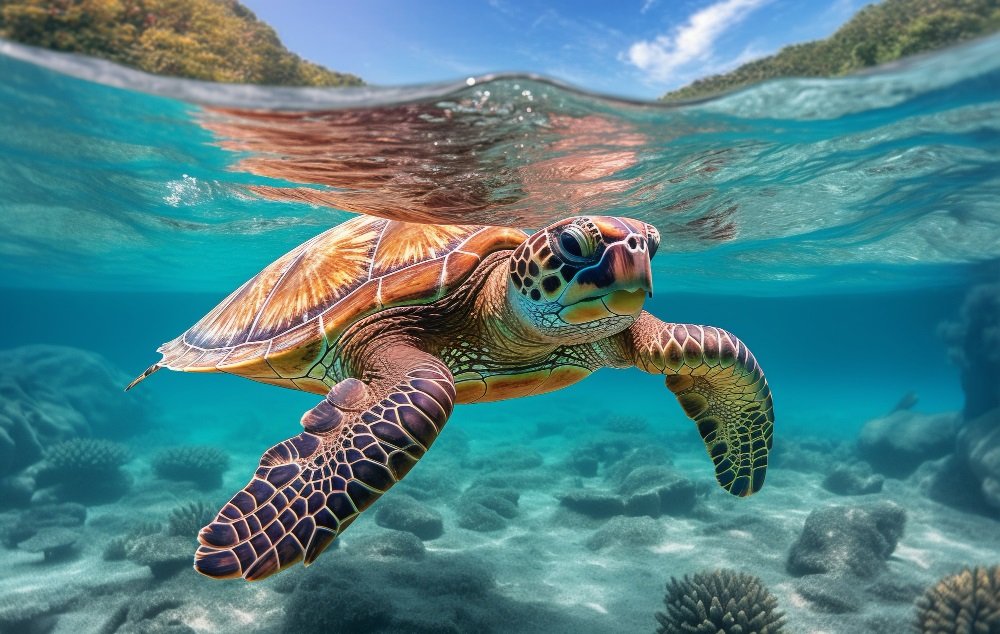Understanding the evolutionary history of turtles is a fascinating journey into the depths of time. These ancient reptiles, with their distinctive shells and enduring presence, have captivated our imagination for centuries.
How Did Turtles Evolve?
Turtles are unique creatures, possessing a remarkable adaptation – their bony shell. This shell, which serves as both protection and support, has made them incredibly successful survivors, inhabiting diverse environments across the globe.
Unveiling the Mystery
The exact origins of turtles and the development of their iconic shell remain a subject of ongoing scientific inquiry. Fossil evidence provides valuable clues, but piecing together the complete evolutionary puzzle is a complex endeavor.
Researchers continue to explore various hypotheses, analyzing anatomical features, genetic data, and geological timelines to shed light on the remarkable journey of turtle evolution.
## How Did Turtles Evolve?
Turtles, with their iconic shells and ancient lineage, have captivated humans for centuries. Their unique anatomy and long evolutionary history have sparked countless questions about their origins and how they came to be the fascinating creatures we know today.
Unraveling the mystery of turtle evolution has been a complex and ongoing scientific endeavor. Fossil evidence, genetic analysis, and comparative anatomy all contribute to our understanding of how these remarkable reptiles came to be.
Early Ancestors and the Shell Mystery
The evolutionary history of turtles is shrouded in some mystery, primarily due to the scarcity of well-preserved fossils from their early ancestors.
Scientists believe that turtles originated from a group of diapsid reptiles, a lineage that also gave rise to dinosaurs and crocodiles. These early ancestors likely possessed features similar to modern lizards, with legs positioned beneath their bodies and a relatively streamlined form. (See Also: Do Turtles Get Tired Of Swimming)
One of the most intriguing aspects of turtle evolution is the origin of their distinctive shell. Unlike the bony plates of other reptiles, a turtle’s shell is formed by the fusion of ribs and vertebrae, creating a protective bony structure that encases their entire body.
The exact evolutionary pathway leading to the shell remains a subject of debate among scientists. Several hypotheses have been proposed:
* **Dermal Armor Hypothesis:** This theory suggests that the shell evolved from bony plates embedded in the skin, similar to the scutes found on some modern reptiles. Over time, these plates would have fused and expanded, eventually forming a complete shell.
* **Rib Expansion Hypothesis:** This hypothesis proposes that the ribs of early turtle ancestors gradually expanded and broadened, eventually fusing with the vertebrae and forming the shell.
* **Modified Vertebral Column Hypothesis:** This theory suggests that the turtle’s shell evolved from a modification of their vertebral column, with the vertebrae becoming more robust and fused together.
Fossil Evidence and Evolutionary Timeline
Fossil discoveries have provided valuable insights into the evolution of turtles. Some of the earliest known turtle fossils date back to the Triassic period, approximately 220 million years ago. These fossils, such as *Odontochelys*, show features that are both primitive and derived, suggesting that turtles were already well on their way to developing their characteristic shell.
Over the subsequent millions of years, turtle lineages diversified and spread across the globe. Fossil evidence reveals a fascinating array of extinct turtle species, some with bizarre features and adaptations.
For example, *Archelon*, a giant sea turtle that lived during the Late Cretaceous period, reached lengths of over 15 feet and weighed several tons. (See Also: Why Are They Called Snapping Turtles)
Modern Turtles: Diversity and Adaptation
Today, there are over 350 species of turtles inhabiting diverse environments around the world. From the arid deserts of the southwestern United States to the lush rainforests of the Amazon, turtles have adapted to a remarkable range of habitats.
Their adaptations include:
* **Shell Morphology:** The shape and size of a turtle’s shell vary greatly depending on its lifestyle and environment.
For example, the dome-shaped shell of a tortoise provides protection from predators, while the flattened shell of a sea turtle allows for efficient swimming.
* **Diet and Feeding Strategies:** Turtles exhibit a wide range of dietary habits, from herbivores that graze on plants to carnivores that prey on fish and other animals.
Some turtles, such as the snapping turtle, have powerful jaws and sharp beaks for capturing and consuming their prey.
* **Reproductive Strategies:** Turtles exhibit diverse reproductive strategies, with some species laying hundreds of eggs in nests on land, while others give birth to live young.
The evolution of turtles is a testament to the remarkable adaptability and resilience of life on Earth. Their unique anatomy, long evolutionary history, and diverse adaptations continue to fascinate scientists and nature enthusiasts alike. (See Also: People Who Look Like Turtles)
Frequently Asked Questions about Turtle Evolution
Where did turtles come from?
Turtles are an ancient group of reptiles, with fossils dating back over 200 million years. Their exact origins are still debated, but the most widely accepted theory suggests they evolved from a group of diapsid reptiles, similar to lizards and snakes.
How did turtles develop their shells?
The evolution of the turtle shell is a fascinating process. It’s believed that the shell developed gradually, starting with bony plates on the turtle’s back and underside. Over time, these plates fused together and became more elaborate, eventually forming the iconic shell we see today.
When did turtles first appear on Earth?
The earliest known turtle fossils are from the Triassic period, around 220 million years ago. This means turtles have been around for a very long time, even predating the dinosaurs!
Are there any living relatives of turtles?
While turtles are unique in their shell structure, they are still reptiles. Their closest living relatives are likely crocodilians and birds, though their evolutionary relationships are complex and continue to be studied.
Why are turtles considered a “living fossil”?
Turtles are often called “living fossils” because their body plan has remained relatively unchanged for millions of years. They have survived numerous mass extinctions and continue to thrive in a variety of habitats around the world.


